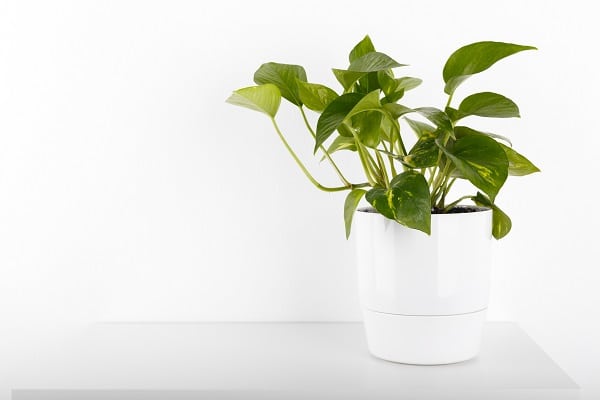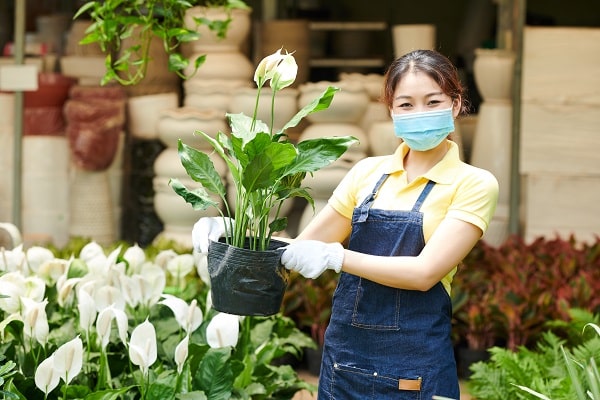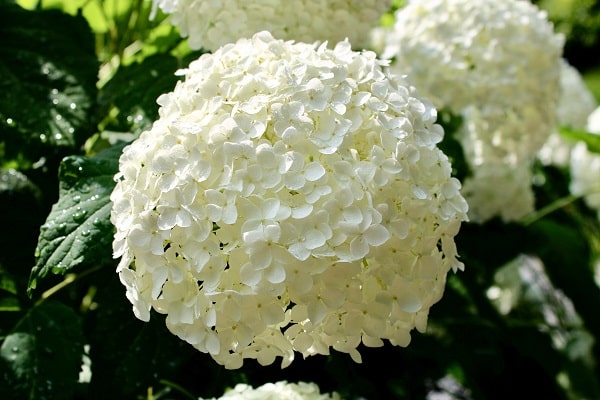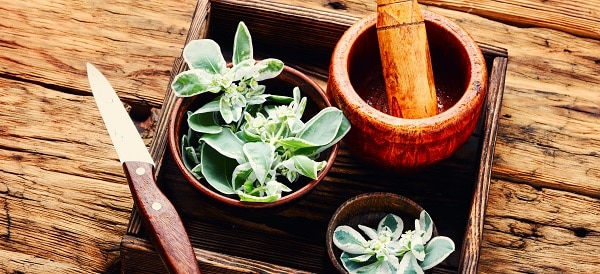Houseplants are indoor plants that give an extraordinary appearance to your home and also offer exceptional benefits. They serve a variety of purposes such as medicinal, showpiece, health, and skin benefits. Having such plants at home is a great way to connect with nature. At the same time, it is equally important to take proper care of them.
Therefore, it is necessary to get complete knowledge of the plants at your house. Whether they’re bad for allergies, harmful for your pets or children, etc., you might think twice before buying any of the plants. One has to be completely aware of the dangers associated with the plants brought home. While most of the houseplants are safe, some may be poisonous for pets and humans.
Contents
Dieffenbachia (Dumb Cane)

It is also known as dumb cane, a popular houseplant due to its vast and attractive leaves. The color of the leaves are green with light yellow or cream patches on them with thick stems that resemble canes. All parts of this plant contain raphides, i.e., needle-shaped crystals of calcium oxalate. Ingesting it would cause stinging and burning sensations in the mouth, causing tears in soft tissue, leading to swelling and inflammation. Raphides can also block the airways, thus leading to difficulty in breathing.
Philodendron

Philodendrons are plants with a variety of leaf shapes and different color patterns. Sometimes it is hard to believe that they belong to the same genus as they are so different. They are mainly grown as ornamental and indoor plants. These also contain raphides, but they are mildly poisonous, and therefore it is believed that one has to eat a large quantity before they develop symptoms. Keep small children and pets away from them as these are highly poisonous if they chew or ingest them.
Pothos (Devil’s Ivy)

Pothos or devil’s ivy is an evergreen vine that trails over the edge of its container. It is considered the best plant as it is attractive and doesn’t require much attention. The leaves are usually heart-shaped with pointed tips. It is the worst to have them at your home as they are highly toxic, especially for children or animals. It contains calcium oxalate crystals, which cause the same symptoms as dieffenbachias and philodendrons.
Caladium

There are multiple types of caladiums; different types have different leaf patterns. They are also known as “elephant ears” due to the large and beautiful leaves, which are arrow-shaped and have multiple colors in patches and other ways. They can be grown in a container indoors and outdoors and also in gardens. However, they contain raphides that cause symptoms that are similar to those of dieffenbachia poisoning.
Peace Lily (Spathe)

Lilies are the most beautiful flowers and are popular both as indoor and outdoor plants. The leaves of a peace lily are narrow and long with a pointed tip. They are dark green in color, leathery, and have shiny surfaces with prominent veins. The reason why peace lily was given its name is due to the white or light green spathe and the stalk that extends above the rest of the plant, resembling flags of peace. It has similar symptoms to those of dieffenbachia poisoning.
Oleander

It is beautiful but one of the most toxic plants, even if consumed in small amounts. It produces flowers that can be white, pink, or purple. The leaves are long, leathery, and have a pointed tip. The list of symptoms from ingesting oleander is long, but it causes various problems such as gastrointestinal, vision, skin, circulation, and nervous system problems.
Bonsai

Bonsai trees are so unique and magnificent that they become the centerpiece of your home. If one has tree allergies, they must be careful while watering or pruning it. Some of the bonsai trees are poisonous and even fatal, especially to animals. The tree’s leaves can cause side effects such as vomiting, diarrhea, lethargy, loss of appetite, drooling, abdominal pain, skin irritation, lack of muscle function, slow heart rate, jaundice, and respiratory paralysis.
Aloe Vera

Aloe vera is one of the best plants due to the variety of benefits it offers. People use it worldwide as a dietary supplement and as an ingredient in cosmetic products to solve skin problems, hair repair, and other medicinal purposes. The aloe plant contains polysaccharides and phenolic chemicals. Ingestion of aloe can result in diarrhea, kidney failure, as well as phototoxicity, and hypersensitive reactions.
Hydrangea

Hydrangeas are beautiful garden flowers mainly used as a show appeal. They are not edible and are harmful to cats, dogs, and horses. Hydrangeas can cause issues such as infections of the bladder, urethra, prostate, hay fever, and kidney stones. They contain a toxin known as cyanide that causes difficulty in breathing, dizziness, rapid pulse, fainting, along with a drop in blood pressure.
Daffodils

Daffodils are one of the most popular spring flowers and are a great indicator of winter. Because of this, they represent rebirth and new beginnings. They grow in various shades of yellow, orange, and white. The most toxic part of daffodils is the bulb; it contains a highly toxic chemical known as lycorine. Ingesting it can cause vomiting, dizziness, nausea, burning, stomach problems, high blood pressure, and even death.
Euphorbia

It is a flowering plant and is very large, commonly called spurge. There are many varieties of euphorbia plants that are shrubs, herbs, or cactus-like specimens. All types of this plant produce a whitish latex sap upon being cut, which is highly toxic. It can irritate the skin and eyes. The initial symptoms are a severe burning sensation with the blurring of vision. The sap may cause a minor rash to the blister of the skin and sometimes, in extreme cases- temporary blindness.
Hyacinths

This plant has two versions: the common hyacinth (Hyacinthus) and the grape hyacinth (Muscari). They are bulbous plants that produce flowers in various colors, such as pink, violet, and white. Hyacinths contain calcium oxalate and lycorine. The toxins are highly concentrated in the bulbs of the plant. The symptoms are similar to those of eating daffodil bulbs. They are mildly poisonous to dogs or cats if ingested or touched.
Conclusion
Plants are an excellent way to decorate your homes and include some greenery in your house to create a peaceful and resting ambiance. They also offer exceptional benefits, but not all plants are suitable to be kept at home. Some plants can be highly toxic to humans as well as animals.
Therefore, one must ensure complete information about these plants for the safety of your loved ones. Furthermore, many of the houseplants contain poisonous chemicals that can be hazardous, causing terrible health. Hence, to conclude, it is essential to consider all the points before buying a plant for your house to be safe and healthy.